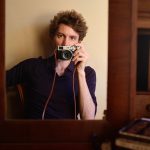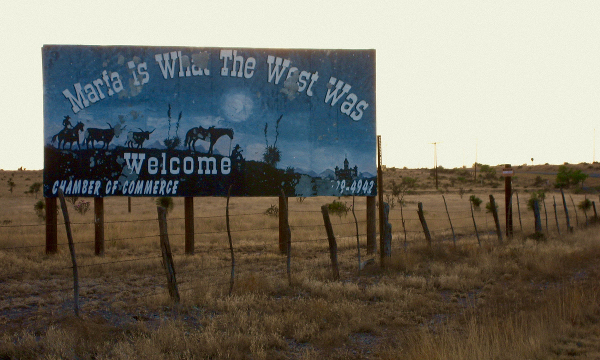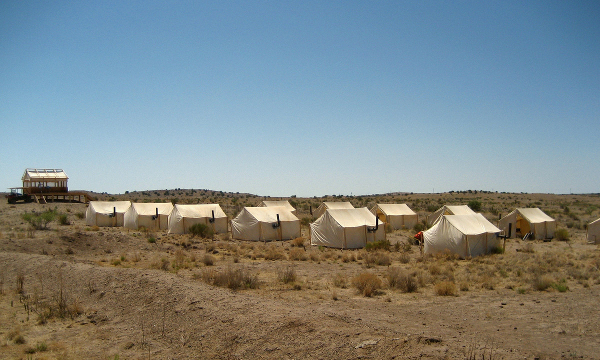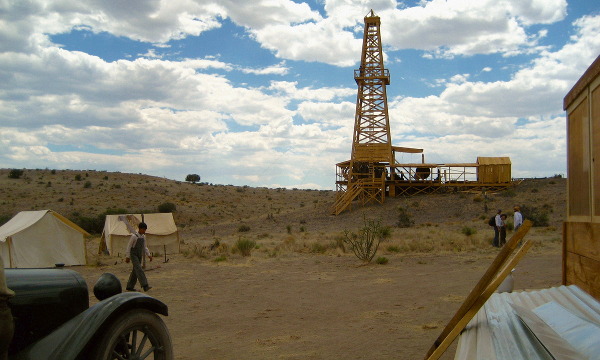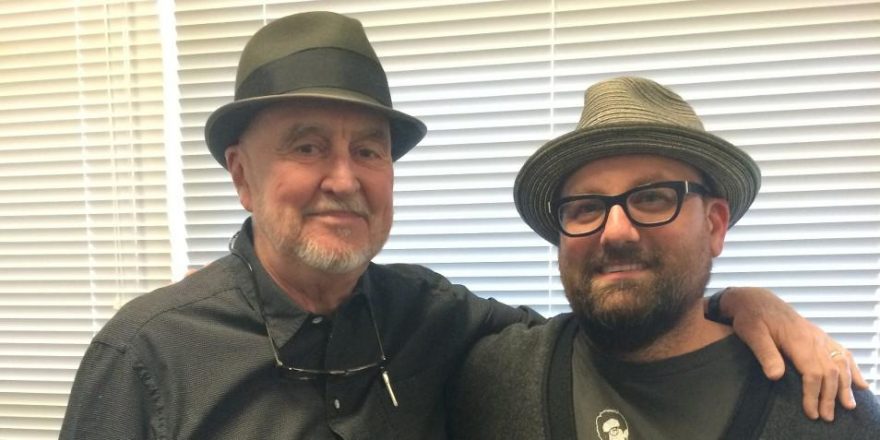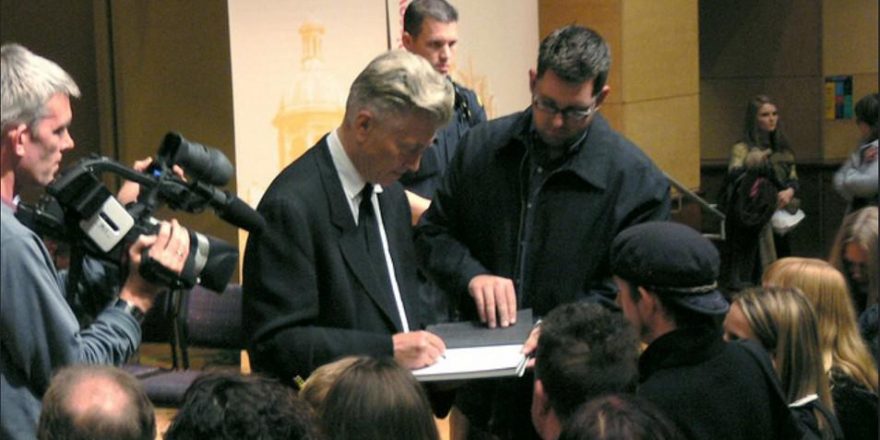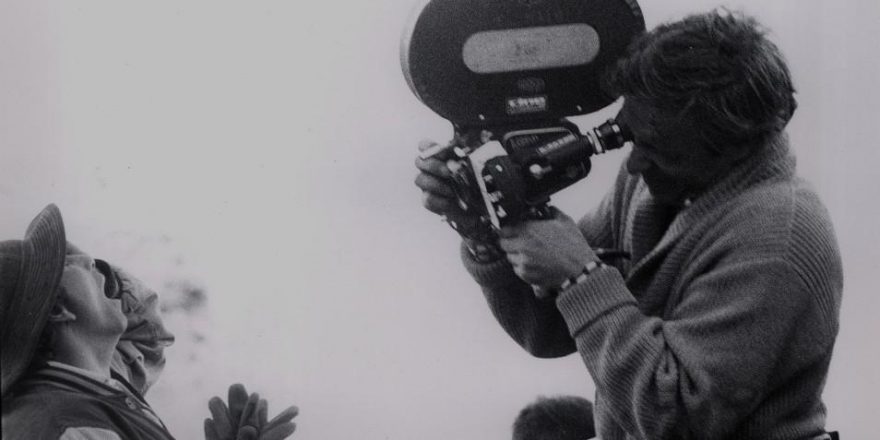In the spring of 2006, I was getting ready to finish film school in Santa Fe, New Mexico, when I read a brief announcement in Variety mentioning Paul Thomas Anderson was preparing to shoot his latest project, an adaptation of Upton Sinclair’s novel Oil!, (somewhat) nearby in Marfa, Texas. I was 21 and up until that point had only loose plans for after graduation, namely to move to Los Angeles in pursuit of a career in the movies.
It had been about four years since the release of Anderson’s last film, Punch-Drunk Love, but I’d been an admirer (read: super fan) since age 14, when I’d first seen Boogie Nights on a letterbox-edition VHS back at film camp in Vermont. From an early age, I had obsessive tendencies toward all things related to film and the directors I admired, and after seeing Boogie Nights began to study Anderson’s young but impressive repertoire inside and out. Weekend nights in high school consisted of repeat viewings of Magnolia or listening to one of Anderson’s DVD commentaries, all of which fueled my fledgling directing efforts. Inspired by Anderson’s use of long tracking shots, I even bought a Steadicam and meticulously crafted a homemade dolly, utilizing them in some of my more ambitious teenage productions.
The few details I could find about Anderson’s next project pointed toward something very different from his previous work. There Will Be Blood would, of course, later become a turning point in his filmography; set in the 19th century and featuring Daniel Day-Lewis’ remarkable portrayal of a monstrous oil tycoon, critics considered this a more serious picture (and rightfully so). An epic in the truest sense of the word, There Will Be Blood now stands as an American cinematic treasure. At the time, all I knew was that it was being shot a little less than 500 miles from my college campus. So, as an aspiring young filmmaker with everything to gain, I decided to travel to West Texas to see if I might land a job on the new P.T. Anderson picture.
On my roadmap, Marfa, Texas, appeared very small (its population is less than 2,000), a detail that was all the more striking in person. Situated at the crosshairs of rural highways that lead you either deeper into the desert or down to the Mexican border, this remote town wasn’t exactly easy to get to, something I’d hoped might play in my favor. After all, I was showing up at the production office looking for work — with no feature-film experience at all.
The production’s headquarters were based in an old feather factory on the outskirts of town, and I remember walking in and being greeted with as much skepticism as surprise for traveling this far on what seemed like a whim. Told that there was no real employment to be had at the moment, but that something might come up down the line, I settled into life in the sleepy desert town and remained optimistic.
Like Plainview, I found myself completely alone under the relentless sun.Somewhat of an anomaly in Marfa is the Hotel Paisano, a historic landmark. Its ties to cinematic history are proudly showcased in frames on its lobby walls. Fifty years earlier, James Dean and Elizabeth Taylor graced its grounds while working on the last film to shoot there, George Stevens’ 1956 Giant. While I waited for my phone to ring, I learned that people working on There Will Be Blood frequented the restaurant’s patio in the evenings, so I naturally posted up at the bar. Looking around the room one night, I first spotted Joel and Ethan Coen, who happened to be in town scouting for their new movie, No Country for Old Men — before Anderson himself walked in. I found myself in a sort of film school grad’s fever dream. Knowing Anderson’s own career began as a production assistant, I approached him hoping he might empathize with the position I was in. Fortunately, he did. While standing at the bar, we talked about California’s history, the cult classic Repo Man, and of course the long road I took to get there. He was kind, with a type of humility I admire. The next day I got a call from the production supervisor, who now promptly offered me work on the film.
My tasks on There Will Be Blood ran the gamut, but I embraced even the most menial of them with the same wide-eyed enthusiasm I had when I rolled into town. I learned the ropes with the usual production jobs, such as distributing call sheets, installing location signs and delivering shot film cans to the nearest FedEx (El Paso, a six-hour round trip), that got me well established amongst the crew. Unique assignments involved me escorting real-life oil drillers across the state, or acting as damage control when an injured set carpenter refused to vacate a motor lodge hired for the production. I quickly learned how many moving parts there were to a motion picture of this size. During pre-production, we suspended large sheets of black duvetyne to enclose a section of the feather factory’s warehouse-like interiors, creating a makeshift theater to screen the 35mm dailies. One evening, Anderson produced a print of Robert Altman’s recently completed A Prairie Home Companion, and hosted an intimate screening there for the few of us that were interested.
The company was made up of an even mix of Anderson’s trusted Los Angeles production team and select Austin-based crew members who were working as locals. I started as somewhat of an outsider to this tightly knit community, but as we got closer to the start of production I began to float between whatever department needed me for a variety of odd jobs. Early on, I was fortunate to be enlisted to work with the art team, whose extensive research materials on California’s oil boom and period reference photos I pored over in the production office. On location, the art director assigned a small group of us to construct each of the canvas tents that stood at the base of the film’s massive oil derrick. Shade was unsurprisingly scarce in the desert, and we were provided only with period-accurate tools to build the site as it would’ve been in the early 1900s. But the insistence on such details had me elated, and those days spent outside in the heat and blowing dust are my most vivid.
The opening scenes of the movie, in which Day-Lewis’ Daniel Plainview digs for silver, were shot at an abandoned mineshaft near Shafter, a ghost town just a few minutes north of Mexico. In the days leading up to principal photography (which was, for the most part, shot in order), the locations department tasked me with a 12-hour security shift guarding a large grip rig that had been built atop the mine. Like Plainview, I found myself completely alone under the relentless sun. Instead of being trapped in the mine, though, I took shelter inside my old, AC-deprived Volkswagen, in fear of a giant insect called a tarantula hawk flying near my hood. I was warned that beyond the incredible pain, the insect’s stings could swell into a welt the size of a golf ball.
Most of the movie was shot on the endless acres of rugged terrain of McGuire Ranch, a sort of Western backlot constructed as a stand-in for the story’s Central California boomtown at the turn of the century. Impressively designed by Jack Fisk to afford 360-degree cinematic possibilities, the sprawling period world was all there, just like it is in the finished film. On the ranch, I maneuvered between doing vehicle lock-ups and runs for the AD department. When craft service became overwhelmed after an elderly background player (dressed in period wool wardrobe) passed out from heat exhaustion, I was recruited to run water bottles out to extras between takes. Another quick promotion came when set documentarian Austin Lynch learned that I knew how to load a 16mm camera and enlisted me to shoot behind-the-scenes footage with a vintage Canon Scoopic.
Most crucially, these days allowed me to observe the shooting process. On set, Anderson remains collected and cool, establishing a casual yet productive atmosphere. The assistant director, Adam Somner (who’s run most of Spielberg’s bigger sets), was perhaps one of the main factors in getting a project of this scope in the can every day. I witnessed elaborately orchestrated Steadicam, jib, multi-unit stunt sequences and dolly shots that all still allowed for the setups to breathe and recalibrate to find the right tone and rhythm. I had gone out there with hopes of getting my hands dirty on a big movie set — which I did, of course — but I was also granted that rare chance to witness a masterpiece being made.
After spending over six weeks in the desert, I eventually had to pack up the one-room cabin I was renting and head further west to Los Angeles, where I promptly graduated from PA work. I left Marfa with the satisfaction of having experienced something more valuable than just a fan’s story of meeting one of the greats. In the decade that has past since, whenever I’m gearing up on one of my own productions, I often find myself thinking back to a specific moment of my time working on There Will Be Blood. One late afternoon, I was told to go into town to buy a disposable cooler and a couple six-packs and then deliver them to a location deep on the ranch. This was well before principal photography had begun, so it was still very quiet out there. I arrived behind the Little Boston town set and found a small group, including Anderson and Day-Lewis, and a Panavision camera mounted on sticks. It was magic hour and they were framing some test shots against the fading sky, just finding their footing for the weeks that lay ahead. I stood by until they wrapped, quietly observing the special atmosphere. Day-Lewis wore his miner wardrobe and long beard, his eye line locked on some distant mark. Anderson shuffled around and whispered, the actor in turn repositioning his gaze. The noise, the people and the other external elements that go into making a movie would come soon enough, but at that moment it was just about establishing the sacred relationship between the director, actor, and camera.



